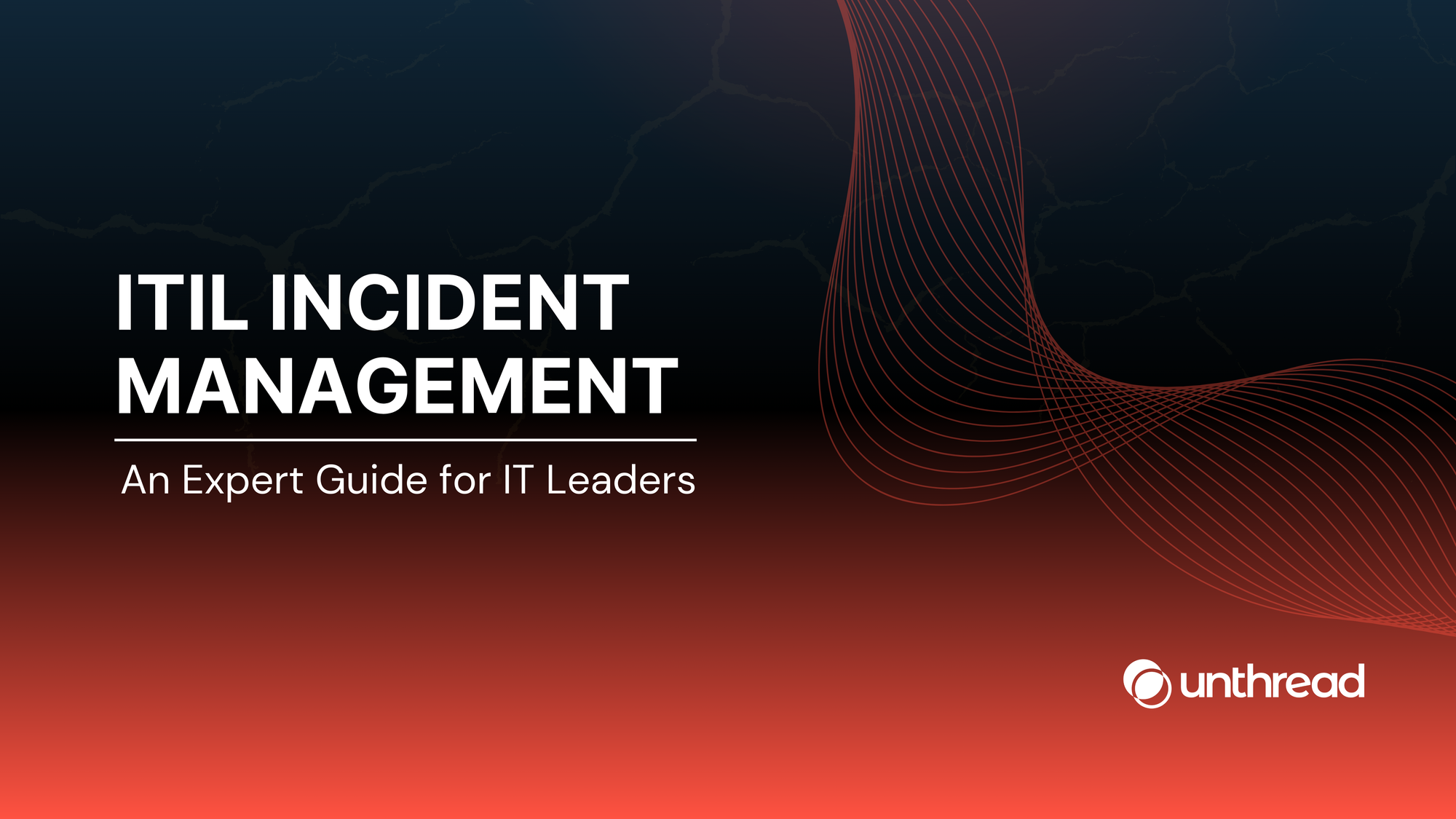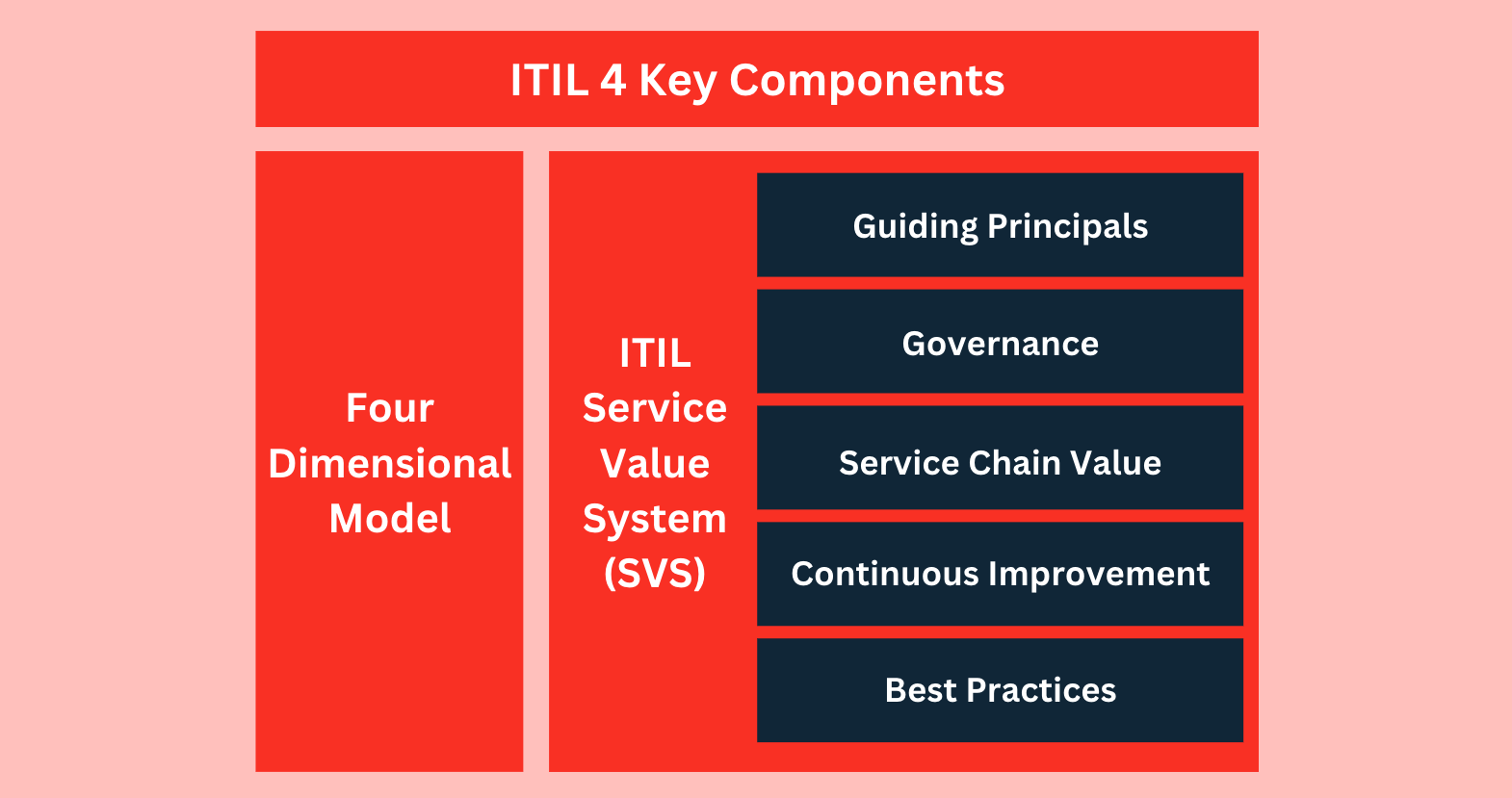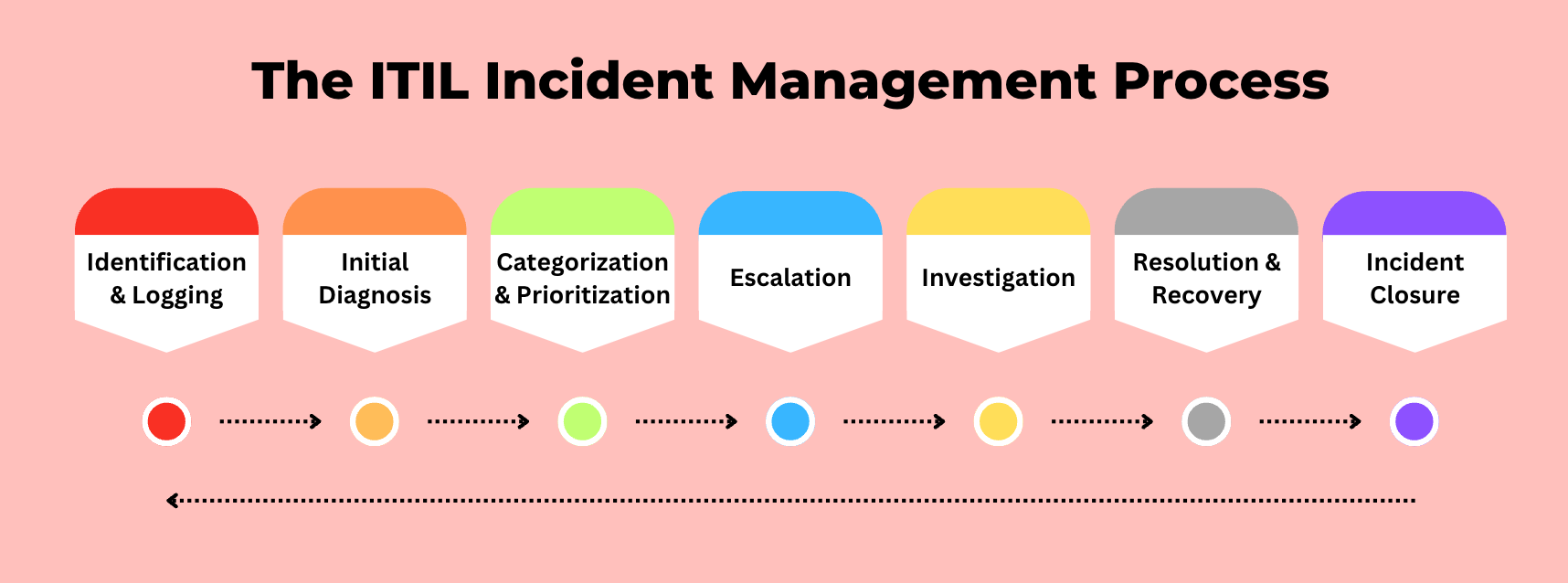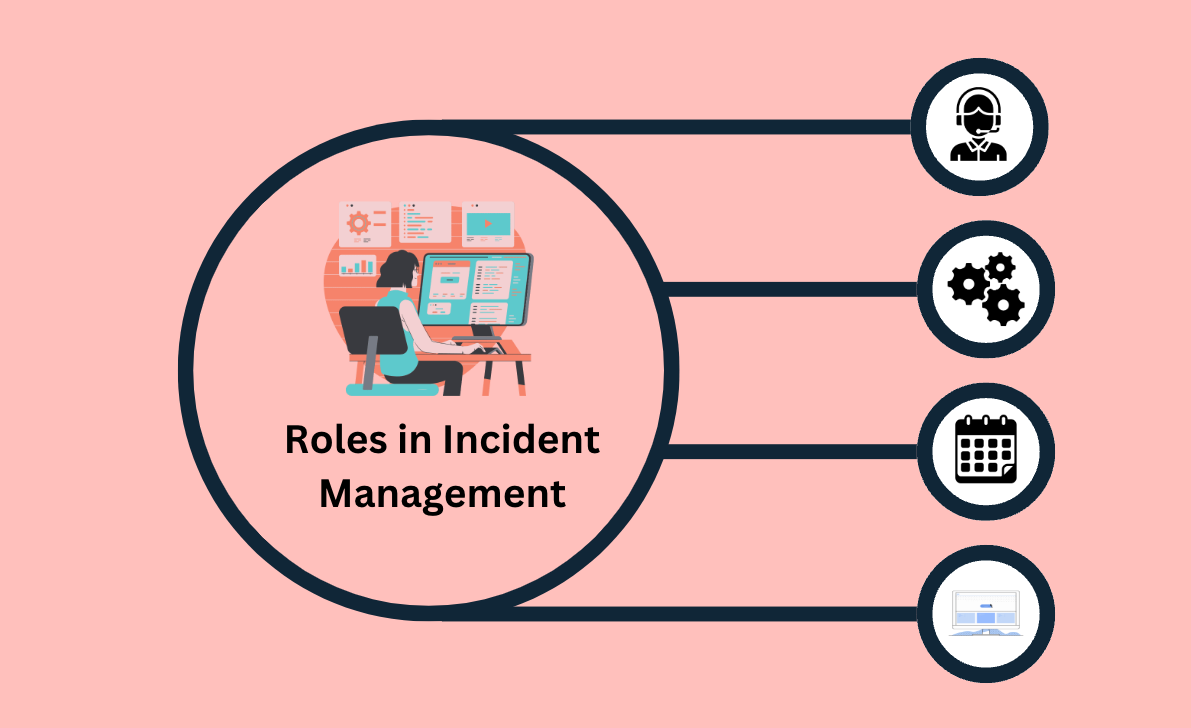ITIL Incident Management: An Expert Guide for IT Leaders
Incident management uses the ITIL framework to handle unplanned events that disrupt IT services. Its primary goal is to restore regular service operations as quickly as possible when an incident occurs.

Introduction
Businesses rely heavily on technology stacks to function smoothly. Hardware, SaaS, and networks are essential tools for daily operations. When everything works as it should, tasks are completed smoothly, and clients are satisfied. However, problems do occur unexpectedly. A server might crash, a network connection might fail, or there could be an unplanned interruption in a data center. These issues can disrupt work, leading to lost time and revenue. That's where ITIL Incident Management comes into play.
Information Technology Infrastructure Library (ITIL) provides a set of best practices for managing IT services. One of its key components is the ITIL Incident Management process, which focuses on handling unforeseen problems in IT services. The objective is to resolve issues quickly to minimize their business impact on the organization. This guide will explain what ITIL Incident Management is, why it's essential, and how it works.
• IT Managers
• Desk Specialists
• System Administrators
What Is ITIL?
ITIL is like a strategic handbook for managing IT services effectively. It offers guidelines that help organizations align their IT resources with business needs, assuring that technology supports the company's strategic goals. By following the ITIL framework, companies can improve service quality, reduce costs, and improve the employee experience. ITIL covers various aspects of IT service management, including how to design, deliver, and manage IT services in a way that adds value to the business.
ITIL V3 vs. ITIL 4
ITIL has evolved to keep pace with changes in technology and business practices. The earlier version, ITIL V3, focused on specific processes and provided detailed guidance on managing IT services. It was comprehensive but sometimes rigid, making it challenging to adapt to new methodologies.
The latest version, ITIL 4, introduces a more flexible and holistic approach. It incorporates modern practices like DevOps, Agile, and Lean methodologies, yielding organizations to new technology adaption. ITIL 4 emphasizes creating value and collaborating across teams, promoting a culture of flexibility and continuous improvement.

Incident Management in ITIL V3 and ITIL 4
ITIL V3 treated Incident Management as a strict process with defined steps to quickly restore service operation. The focus was on following procedures meticulously to resolve incidents. However, in ITIL 4, Incident Management is seen as more flexible and adaptable, integrating with other practices within the ITIL framework. ITIL 4 emphasizes delivering value to the customer and encourages continuous learning and improvement. It promotes collaboration among different teams to resolve incidents more efficiently.
What Is Incident Management?
Incident Management is the practice of handling unplanned events that disrupt IT services. An incident is any event that interrupts normal service or reduces the quality of IT services. This could range from a minor issue like a single user's computer malfunctioning to a significant problem like a company-wide network outage.
The primary goal of Incident Management is to restore normal service operation as quickly as possible. By resolving incidents promptly, businesses can minimize the negative impact on operations, maintain productivity, and keep customers satisfied. Effective Incident Management ensures that IT services remain reliable and that disruptions are handled efficiently.
Why Is Incident Management Important?
Incidents can cause significant delays and frustration for both employees and customers. Effective Incident Management is crucial because it helps:
- Reduce Downtime: Quickly resolve incidents and minimize the time services are unavailable, improving service availability.
- Maintain Service Quality: IT services function properly is a key responsibility of IT leaders, as it maintains the overall quality of service and keeps the business running smoothly.
- Improve Customer Satisfaction: Promptly addressing issues leads to happier customers who are more likely to remain loyal.
- Prevent Future Incidents: Learning from past incidents helps organizations implement measures to avoid similar problems in the future.
By focusing on these areas, Incident Management supports the business's overall goals and contributes to its success. It reduces downtime, maintains service quality, improves customer satisfaction, and prevents future incidents. These benefits keep the business running smoothly and enhance its reputation and competitiveness in the market.
The ITIL Incident Management Process
The ITIL Incident Management process involves several key steps to ensure incidents are handled efficiently and effectively. Understanding this incident management workflow is essential for IT leaders aiming to implement best practices.

- Identification and Logging: Recording all relevant details is essential when an incident occurs. This is known as incident logging. Information such as the time of the incident, a description of the problem, and the affected services or users are documented as incident details. This step ensures a clear record of the issue, which is crucial for tracking and resolution.
- Initial Diagnosis: A service desk agent reviews the logged incident to better understand the problem. They assess the nature of the incident and determine its potential business impact on the organization. The agent may ask the user for additional information to clarify the issue.
- Categorization and Prioritization: The incident is then incident categorization based on its type, such as hardware failure, software error, or network issue. It is also prioritized according to its urgency and impact on business operations. Incident prioritization helps the service desk team focus on resolving the most critical issues first, ensuring that resources are allocated effectively.
- Escalation: If the service desk agent cannot resolve the incident promptly, it is escalated to a specialized support team or an incident manager. Escalation ensures that more complex issues receive attention from team members with the appropriate expertise, such as the incident response team.
- Investigation and Diagnosis: The assigned support team investigates the incident to identify the root cause. They may perform tests, check system logs, or consult with other experts. Collaboration with DevOps teams, event management, or other specialized groups is necessary to resolve complex problems.
- Resolution and Recovery: Once the root cause is identified, the support team implements a solution to fix the issue. This may involve repairing hardware, updating software, or adjusting configurations. The goal is to restore the service to its normal operating state as quickly as possible, adhering to agreed resolution times outlined in service level agreements.
- Incident Closure: The incident is formally closed after confirming that the incident has been resolved and the service is functioning correctly. The team documents the steps to resolve the issue and updates any relevant records or knowledge bases. This information can be valuable for handling similar incidents in the future and contributes to the organization's collective knowledge.
The Incident Management Life Cycle
Understanding the incident management life cycle helps organizations manage incidents from start to finish. It encompasses all stages, from detection and logging to resolution and incident closure. Following this life cycle ensures a structured approach and helps maintain service quality.
Roles in Incident Management
Effective Incident Management relies on clear roles and responsibilities within the team.

The Service Desk Agents are the first point of contact for users experiencing issues. They are responsible for incident logging, providing initial support, and keeping users informed about the progress of their incidents. If necessary, they escalate the incident to higher-level support teams.
The Incident Manager oversees the entire Incident Management process. They coordinate efforts among various teams to ensure that incidents are resolved promptly. The incident manager monitors the progress of incident resolution and communicates updates to stakeholders.
Support Staff comprises specialists who handle more complex incidents requiring specific expertise. They work on investigating and resolving issues that the service desk cannot fix. Support staff may include network engineers, software developers, or system administrators.
Event management involves monitoring IT systems to detect potential issues before they become significant incidents. By identifying unusual events or patterns, the event management team helps prevent incidents from occurring. They work closely with the incident manager and support teams to address potential problems proactively.
Handling Major Incidents
What Are Major Incidents?
A major incident is a severe problem that affects critical business services or many users. Examples include a total network failure, a significant security breach, or a system outage that halts essential operations. Because major incidents can substantially impact the business, they require immediate and focused attention.
Managing Major Incidents
Dealing with major incidents involves a more intense and coordinated approach known as major incident management:
- Quick Response: Immediate action is taken to minimize the impact on the business. Rapid mobilization of resources is essential.
- Communication: It is crucial to keep all stakeholders informed. This includes management, employees, customers, and sometimes external partners.
- Collaboration: Various teams work together closely to resolve the issue. This may involve support teams, incident managers, event managers, and external vendors.
- Post-Incident Review: After resolving the incident, a thorough analysis is conducted to understand what happened. Lessons learned are used to improve processes and prevent similar incidents in the future.
Effective management of major incidents helps minimize damage to the business and restores services as quickly as possible.
Incident Management Best Practices
Implementing incident management best practices enhances the efficiency and effectiveness of the process.
Standard Procedures and Process Flow
Establishing transparent and standardized procedures ensures everyone knows what to do when an incident occurs. Documented processes provide guidance and help maintain consistency in incident handling. A clear process flow helps streamline the steps involved in incident management.
Use of Tools
Leveraging incident management software can automate routine tasks, such as ticket creation, notifications, and status updates. Tools can also provide valuable data analytics, helping teams identify trends and areas for improvement.
Continuous Improvement
It is essential to review and refine Incident Management processes regularly. Organizations can identify weaknesses and implement changes to enhance performance by analyzing past incidents and gathering feedback. This contributes to the organization's knowledge base and supports continuous learning.
Training and Knowledge Sharing
Regular training ensures team members have the necessary skills and knowledge. Sharing knowledge across the team enables better incident handling. Staying up-to-date with the latest technologies and best practices enables the team to handle incidents more effectively.
Linking Incident Management with Other Practices
Incident Management does not operate in isolation. It is closely connected with other ITIL practices.
Problem Management
While Incident Management focuses on resolving issues quickly, Problem Management aims to identify and eliminate the underlying causes of incidents. By addressing root causes, organizations can prevent incidents from recurring, reducing the overall number of incidents over time.
Change Management
Changes to the IT environment, such as software updates or infrastructure modifications, can sometimes lead to incidents. Change Management helps control and coordinate changes to minimize risk. By planning and testing changes carefully, organizations can reduce the likelihood of introducing new problems.
Service Request Management
This function handles routine user requests, such as password resets or access to new applications. Differentiating between service requests and incidents helps teams prioritize their workload and allocate resources appropriately.
Incident Management with Unthread
Unthread is an IT Service Management (ITSM) platform offering incident management workflows to keep IT teams engaged. The issue resolution portals provide all the necessary information to view and analyze incident health. In the event of an incident, Unthread's system routes the appropriate resolution teams and stakeholders to triage, address, and resolve incidents on the go.
The incident management workflows are also a favorite among employees as they ensure easy access to support for tracking and resolving inquiries before they escalate into major incidents. Users can efficiently manage incidents through a self-service portal, Slack, or email.
Conclusion
Incident Management is vital for maintaining reliable IT services and supporting business operations. Organizations can reduce downtime, improve customer satisfaction, and enhance productivity by handling issues quickly and efficiently. Implementing ITIL Incident Management practices provides a structured approach that can adapt to changing needs.
Investing in Incident Management pays off by improving service quality and building trust with customers and stakeholders. As technology evolves, staying informed about new tools and methodologies will help organizations effectively meet future challenges. Embracing continuous improvement and fostering collaboration across teams are essential components of success.

